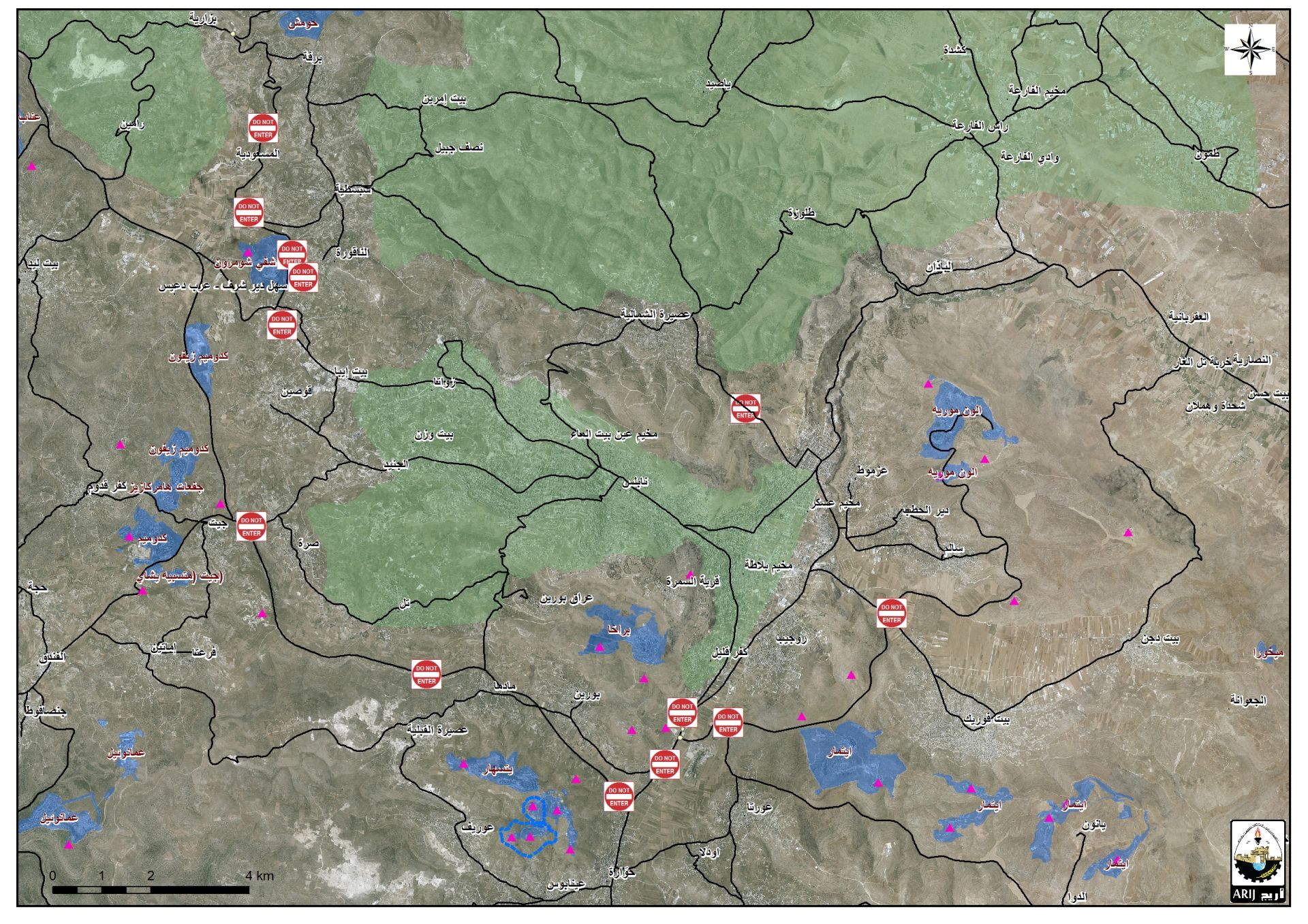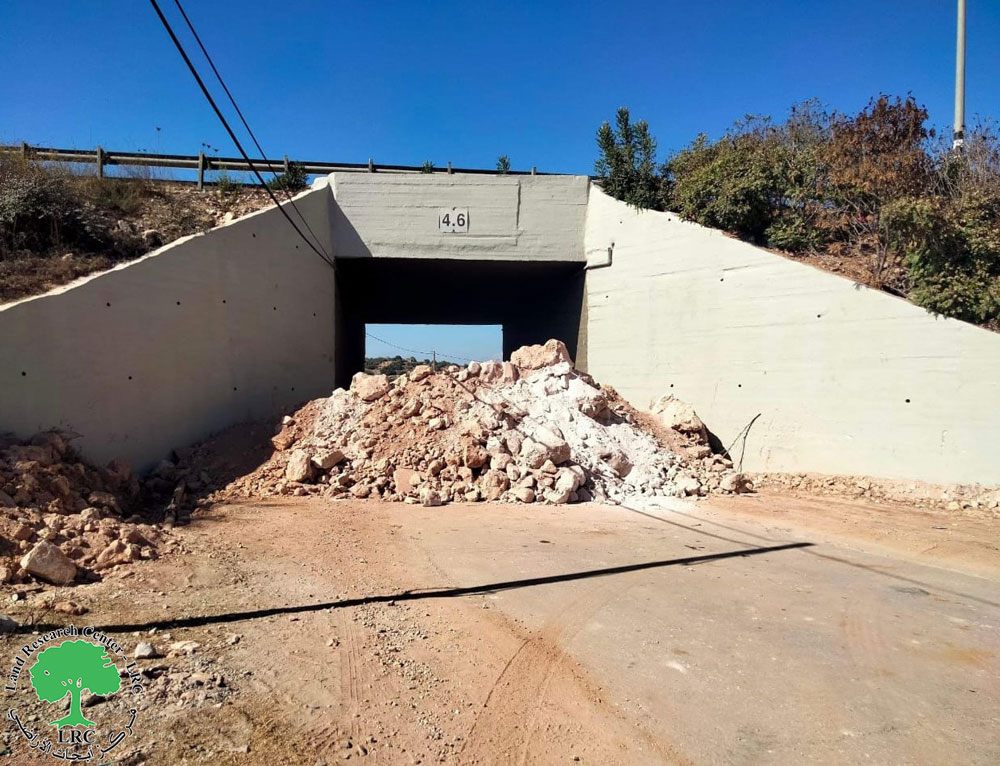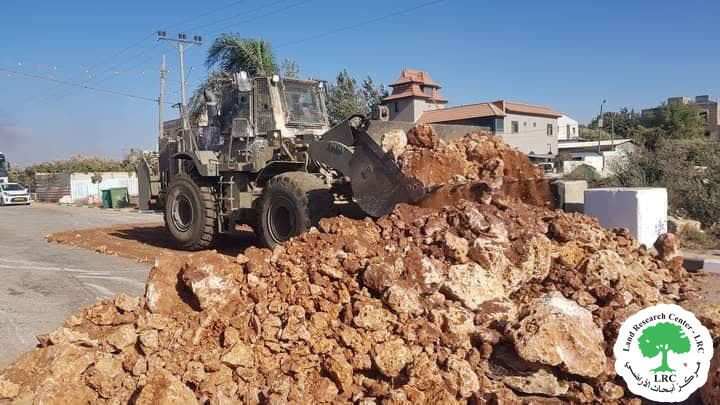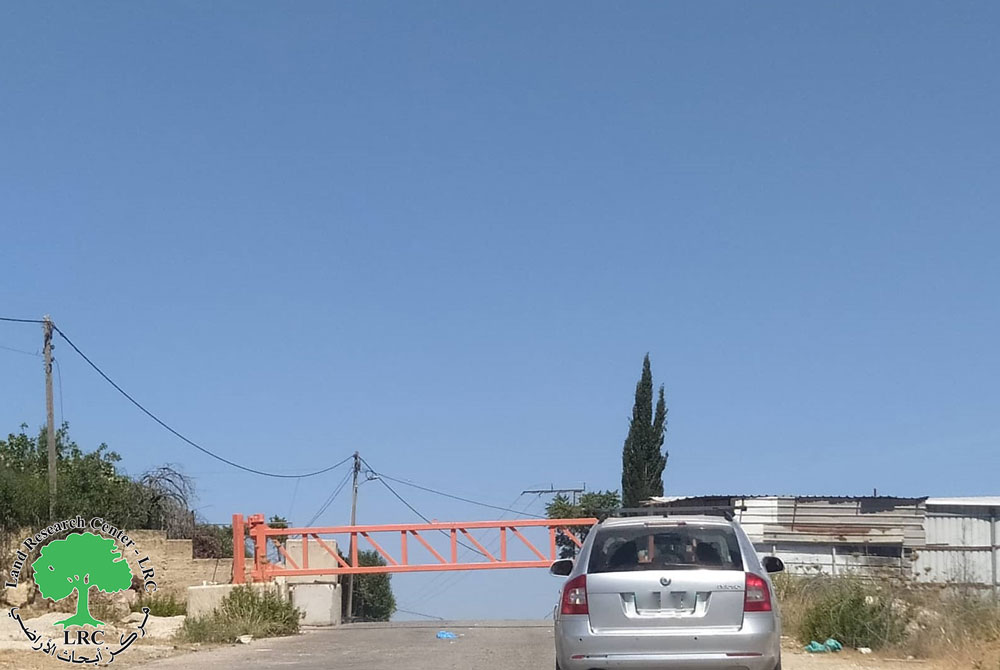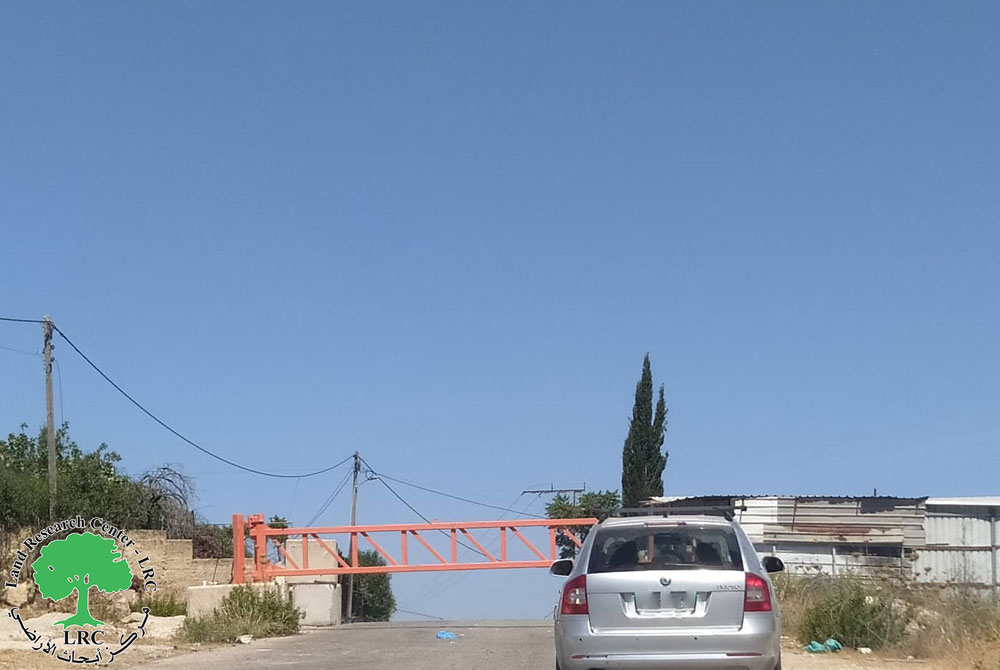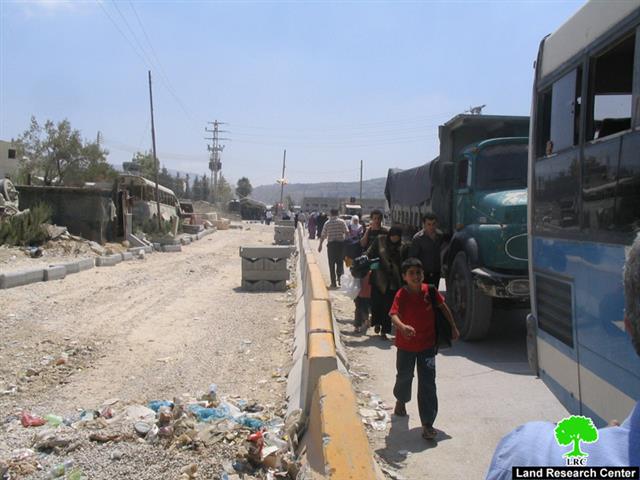-
The return of Israeli forces to Beit Iba checkpoint is possible as the infrastructure of the checkpoint still present and has not been removed; Israeli occupation forces withdrew from the checkpoint, located north of Nablus’s main entrance, and were placed in the observation towers present at the checkpoint. None of the structures comprising the checkpoints (trenches, pillboxes, observation towers) were dismantled which makes the return of these soldiers possible and easily done. (Photo 1) )
-
The establishment of a new checkpoint 2 kilometers away from the old Beit Iba checkpoint; Israeli occupation forces established a new checkpoint on the main road north of the city of Nablus and about 2 kilometers away from the old checkpoint. The newly-established checkpoint is considered to be the main valve that controls the Palestinian vehicular and pedestrian movement between the governorates of Nablus, Tulkarem, Jenin and Qalqilia. The presence of the new checkpoint means the Israeli control of Palestinian commercial and civilian movement in and out of Nabuls is still present. As such, the new checkpoint can be seen as complementing (rather than replacing) the function of the old checkpoint which the Israeli occupation claims to have removed. The new checkpoint consists of military observation towers, vehicle lanes in addition to a general parking lot to be used by military vehicles. (Photo 2).
The opening of closures is followed by the reinforcement of closures around a number of Palestinian cities and villages; Israeli bulldozers closed off the main road connecting between the villages and Hijja and Kufr Qadoom and the village of Baqat Al Hatab in Qalqilia Governorate. That is in addition to the closure of the road connecting between the villages of Kufr Qadoom and the road known Al Kafriyyat Road which leads to the city of Tulkarem. Big rocks were placed on that road, thus preventing the passing of any Palestinian cars and vehicles. That is in addition to placing a number of earthmounds at the entrance of the village of Hijja which leads to the village of Al Funduq. Putting these closures together, we conclude that access to the villages of Hijja, Al Fundoq, Baqat Al Hatab and Kufr Qadoom has been largely hampered, thus, isolating the communities completely from its immediate environs. The aforementioned blocked main road is the only entrance to the city of Tulakrem from these villages, especially after the fact that the main road leading to the town of Kufr Qadoom (used to be located parallel to the colony of Qadomim) was overtaken by the colony. The Palestinian traffic that used to use the now-closed main road was diverted to an agricultural road passing through the villages of Hijja and Baqat Al Hatab. Even this road has been closed off recently with an earthmound, leading to the total isolation of the village. Out of frustration, the Palestinians of Baqat Al Hatab used their agricultural tractors to partially open the road leading to Hijja. Yet, it would be hardly a surprise if the Israeli occupation forces close it yet again.
Map 2
The closure of the entrance of the village of Haris with earthmounds; On the 19th of March, 2009 Israeli occupation forces placed a large earthmound at the entrance of the village of Haris located northwest the Governorate of Salfeet. As such, around 2,300 Palestinians living the village became trapped within the village with no possibility of using any type of transportation. The entrance of the village is located on the junction connecting between the main road of the village and the By-Pass Road 505 (Photo 3).
Map3
The 31-year old Mahmoud Wajeeh Kiwan from the town of Sabastiya commented with the following regarding the hype surrounding the easing of moving restrictions: ‘ In the past, when we wanted to access our work stations in the city of Nablus we were forced to use the Beit Iba checkpoint. We faced daily humiliation on the hands of the Israeli occupation soldiers manning the checkpoint. Now, after the supposed removal of the checkpoint, we didn’t touch or feel any difference on the ground as we still need to use the new checkpoint to enter and exit Nablus city. As such, the suffering is the same and the presence of Israeli occupation forces has not changed a bit. ‘
As for the 43-year old Mr. Adnan Abdel Khaliq Shteiwi, a resident of the village of Kufr Qadoom, he commented with the following regarding the re-closure of the entrances of the village: ‘ The village of Kufr Qadoom has only one entrance that connects it with the village of Hijja. The multiple closures that surrounded the village since the year 2000 pushed a large number of the villagers to leave it and live outside of it. The closure of the only remaining opening in the village will, in effect, turn the village into one big prison encircled with closures and colonies from all directions. This will devastate the economy of the village which is already deteriorating.’
The aforementioned Israeli practices are strong evidence that the Israeli promises to create movement easement on the ground for the benefit of the Palestinians are nothing but mirages. At the time that the Israeli occupation has magnified the effects of the removal of Beit Iba checkpoint, no improvement in the lives of the Palestinians was recorded as tightening of other closures usually goes hand in hand with the seemingly “easing” declared by the occupation forces.
Prepared by:
The Land Research Center
LRC









